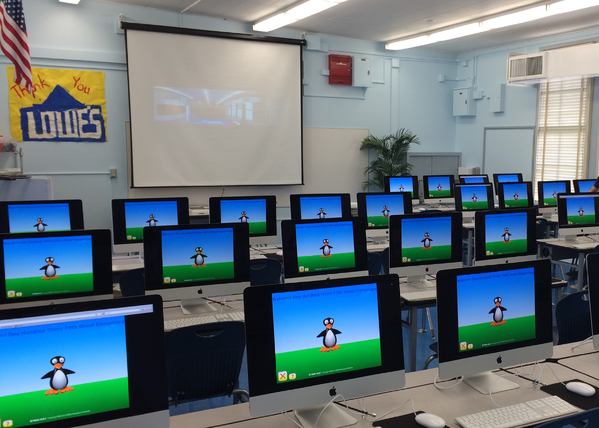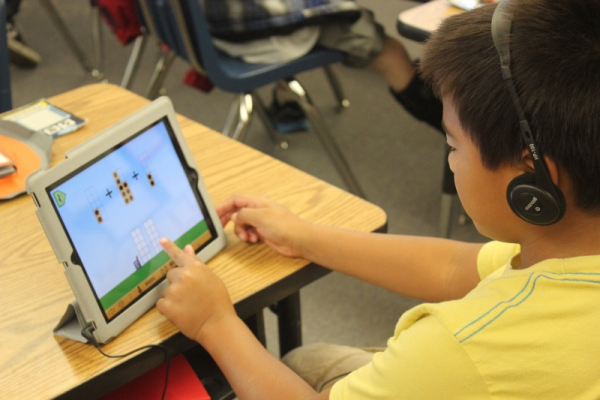

Despite their deep attachment to and lightning-speed use of technology on a daily basis, U.S. students, as a whole, perform dismally in STEM — science, technology, engineering and math. According to results from the latest Program for International Student Assessment (PISA), American teenagers have slipped from 25th to 31st worldwide in math and from 20th to 24th in science since 2009. Has easy access to information inadvertently led to the loss of experiential learning? Have we made answers so easy to search for online that our innate problem-solving skills are atrophying? If critical thinking continues to decline and innovation wanes, who will solve the world's most challenging problems today and in the future?
These are questions we consider on a daily basis at MIND Research Institute, and they're some of the topics and challenges addressed at the U.S. News STEM Solutions National Leadership Conference held April 23-25 in Washington, D.C. Among the solutions
presented to executives, educators and policymakers attending the conference was ST Math, a revolutionary software program featuring a little penguin named JiJi.

Today 630,000 students in 2,050 schools across 35 states are learning math using MIND Research's revolutionary spatial-temporal approach, which repeatedly has been proven to increase students' math performance. Created by neuroscientists, ST Math uses computer-based visual puzzles and immediate, informative feedback to create a deeper understanding of math and foster persistence in problem solving.
Our goal is to double the number of students using ST Math in three years...
...and then double it again and again until we achieve our mission: to ensure that every child is mathematically equipped to solve the world's most challenging problems.
To be fair, "every child" is a LOT of students! It will take a big investment — in MIND Research, in our schools, in our children — to get us there. It will require public-private partnerships with school district leaders embracing the new wave of education technology and support from private corporations, foundations and individuals to invest in the hardware, software and teacher training necessary to make them effective. And it will require philanthropic faith that the highly effective methodology used in existing K-5 ST Math programs can be applied to advanced math topics such as algebra and calculus. By funding the development of games that increase understanding, we can stop middle and high school students from falling off the algebraic cliff that keeps so many students from believing they are capable of math success beyond the minimal high school requirements.
We believe that corporate leaders and education philanthropists like those at U.S. News STEM Solutions are prepared to step up to the plate. Corporate America has long supported education, with each company identifying specific regions and topics of importance to their industry or philanthropic goals. Despite this well-intentioned support, student performance nationwide has continued to decline. Recognizing that their future aggregate workforce does not have the deep understanding of math and science necessary to develop a generation of strong critical thinkers and problem solvers, many Fortune 500 companies and leading philanthropists now have a laser focus on the STEM crisis. And in a move that befits the world's leading CEOs and business leaders, they have done so with strategic precision and a laser-sharp focus on measurable results.

Even the strongest competitors will join forces against a common enemy — and there is no greater threat to America than a lost generation of workers, thinkers, inventors, creators. Shared interest in ending this crisis has led to tremendous, targeted and coordinated investment in educational approaches to STEM that are innovative, proven, effective, scalable and quantitatively different than what is currently available in most American schools.
Two national initiatives — one spearheaded by the Business Roundtable, a group composed of CEOs from U.S. companies worth a combined $7.4 trillion in annual revenues, the other directed by the CEO-led Change the Equation — have helped shape the future of STEM investment. Using a rigorous and highly selective list of criteria designed to identify the very best, most transformative, truly revolutionary educational solutions to reverse the STEM slide, these initiatives held an open STEM education competition and recruited celebrated educators and innovators to review the applications, choose the top submissions and interview the finalists. When the test was complete and it was time to set the pencils down, a very short list of exemplary STEM programs was revealed; MIND Research Institute was the only organization selected by both. And along with the other selected education innovators, MIND Research has laid the foundation for the eventual reversal of the STEM slide in the U.S. MIND Research will accomplish this through:
The solution to our STEM education challenges, like the problem, belongs to all of us. It won't be cheap, and it won't be easy. The most effective educational tools necessary to fuel the learning revolution have already been identified through a thoughtful and meticulous process. Access to these tools, for every student, is the best social investment we can make — as individuals, as companies, as a society. Because instilling our children with critical thinking and problem solving skills is a test we, as a nation, simply cannot afford to fail.
Cisco cash grants supported the conversion of math instructional software to an online format, extending MIND Research Institute's reach from 55,000 elementary students to 630,000. Language-independent animations help all students develop critical thinking, reasoning, and mathematical abilities. For more information, visit:http://csr.cisco.com/casestudy/mind-research-institute
Janine Ingram is Vice President of Philanthropic Partnerships at MIND Research Institute.
This article was originally published on Huff Post ImpactX.
Comment